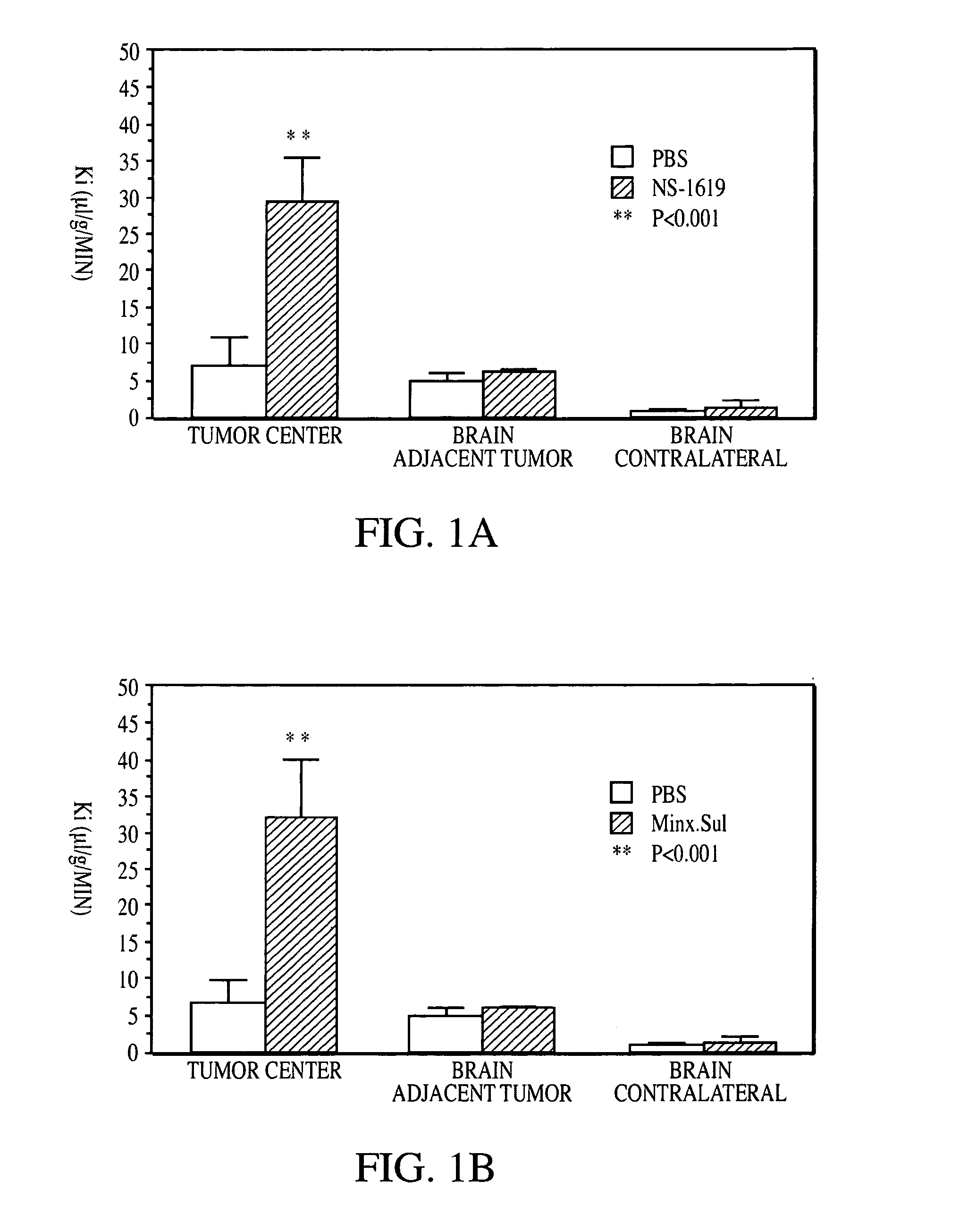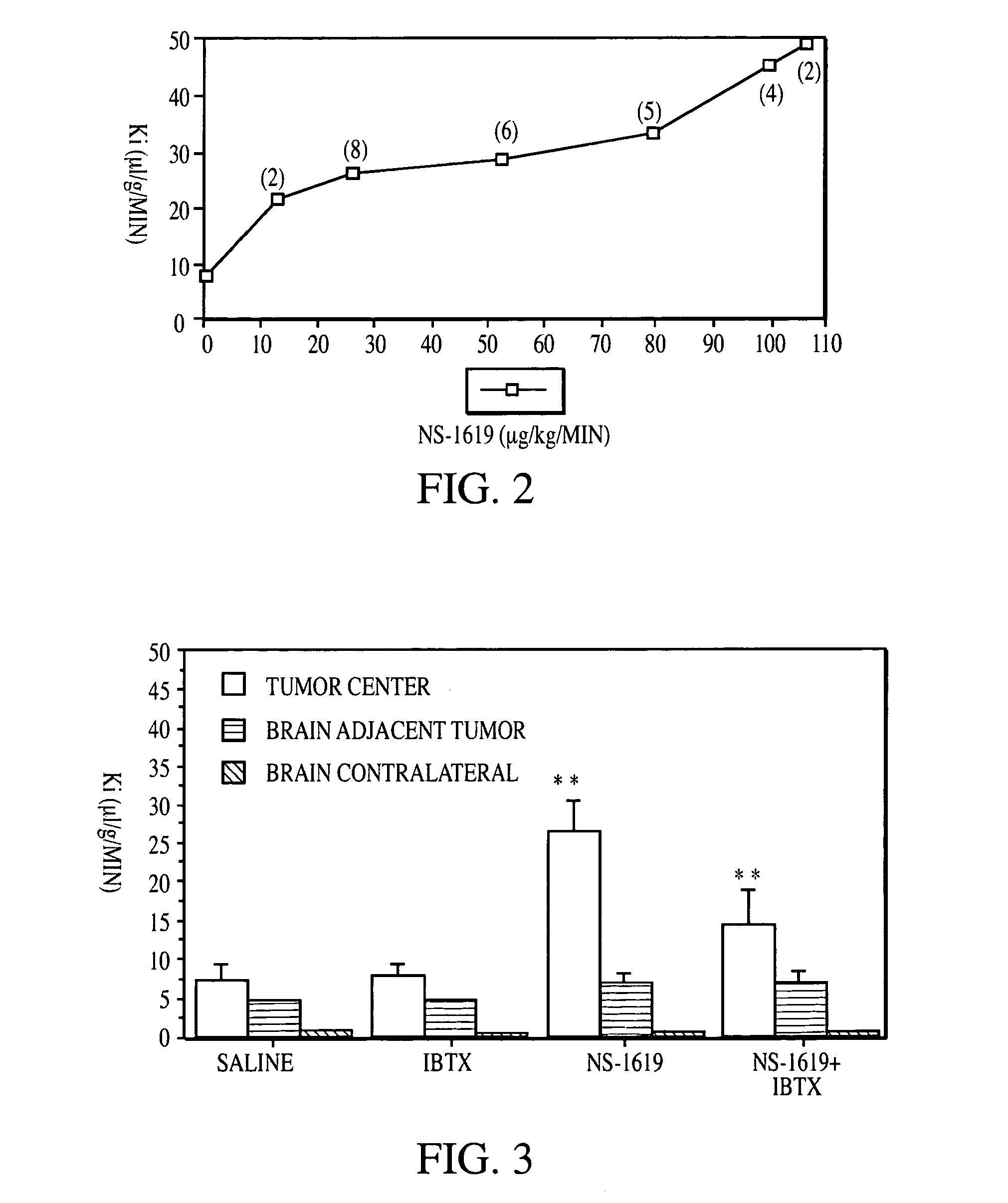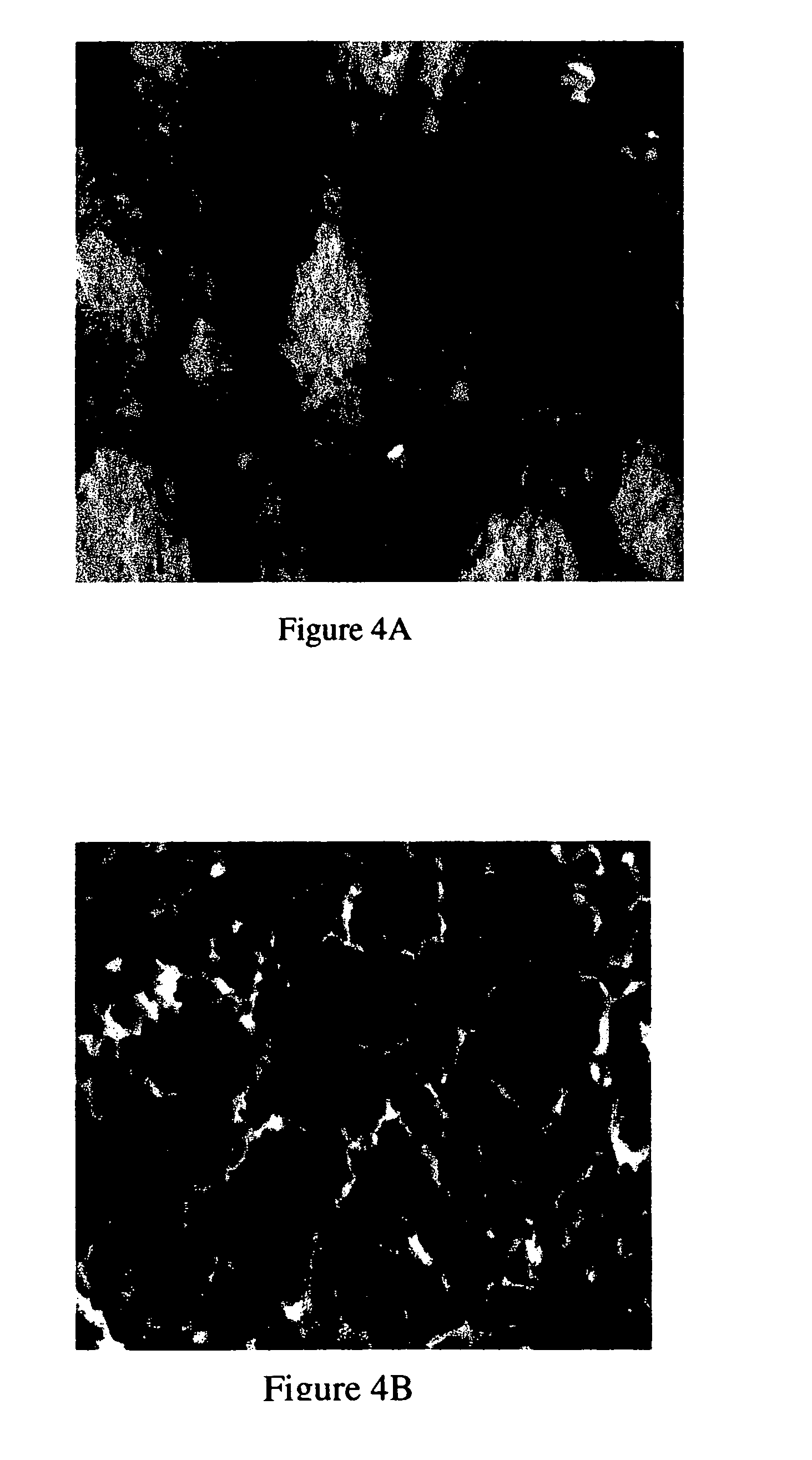Method for using potassium channel agonists for delivering a medicant to an abnormal brain region and/or a malignant tumor
a potassium channel agonist and brain tumor technology, applied in the field of medical science, can solve the problems of limiting the efficacy of novel therapeutic agents, cytotoxic chemotherapeutic agents, monoclonal antibodies, cytokines, etc., and achieves the effects of reducing the risk of cancer, and increasing the selectivity of drug delivery
- Summary
- Abstract
- Description
- Claims
- Application Information
AI Technical Summary
Benefits of technology
Problems solved by technology
Method used
Image
Examples
example 1
Methods
[0054]Malignant Cell Line and Tumor Implantation. A rat glioma cell line, RG2, was used for implantation of experimental brain tumors in Wistar rats. The techniques for RG2 cell propagation and maintenance in tissue culture have been described (Sugita, M. and Black, K. L., Cyclic GMP-specific phosphodiesterase inhibition and intracarotid bradykinin infusion enhances permeability into brain tumors, Cancer Res. 58(5):914–20 [1998]; Inamura et al. [1994]; Nakano, S. et al., Increased brain tumor microvessel permeability after intracarotid bradykinin infusion is mediated by nitric oxide, Cancer Res. 56(17):4027–31 [1996]). Briefly, RG2 cells derived from a rat glioma are kept frozen until use, then are thawed and maintained in a monolayer culture in F12 medium with 10% calf serum.
[0055]The Wistar rats (approximately 140–160 g body weight) were anesthetized with intra-peritoneal ketamine (50 mg / kg), and glial cells (1×105) were implanted into the right hemisphere, but not the cont...
example 2
Results
Potassium Channel Activators Selectively Increase Transport Across the Blood-tumor Barrier.
[0057]When Wistar rats bearing implanted glioma cells were infused with either NS-1619 or minoxidil sulfate, at 7.5 μg kg−1 min−1 for 15 minutes, the unidirectional transport constant Ki for [14C]α-aminoisobutyric acid (AIB) was significantly increased by both NS-1619 and minoxidil sulfate with respect to transport across the neovasculature forming the blood-tumor barrier, but not with respect to transport across normal brain microvasculature. (FIGS. 1A and 1B). These results demonstrate that activation of potassium calcium channels selectively increases the permeability of molecules across the capillaries of solid malignant tumors compared to capillaries supplying normal brain tissue.
[0058]The dose-dependent nature of this increased permeability is demonstrated in FIG. 2, which shows that increasing the dose of NS-1619 results in an increase in the unidirectional transfer constant Ki f...
PUM
| Property | Measurement | Unit |
|---|---|---|
| pH | aaaaa | aaaaa |
| diameter | aaaaa | aaaaa |
| pH | aaaaa | aaaaa |
Abstract
Description
Claims
Application Information
 Login to View More
Login to View More - R&D
- Intellectual Property
- Life Sciences
- Materials
- Tech Scout
- Unparalleled Data Quality
- Higher Quality Content
- 60% Fewer Hallucinations
Browse by: Latest US Patents, China's latest patents, Technical Efficacy Thesaurus, Application Domain, Technology Topic, Popular Technical Reports.
© 2025 PatSnap. All rights reserved.Legal|Privacy policy|Modern Slavery Act Transparency Statement|Sitemap|About US| Contact US: help@patsnap.com



